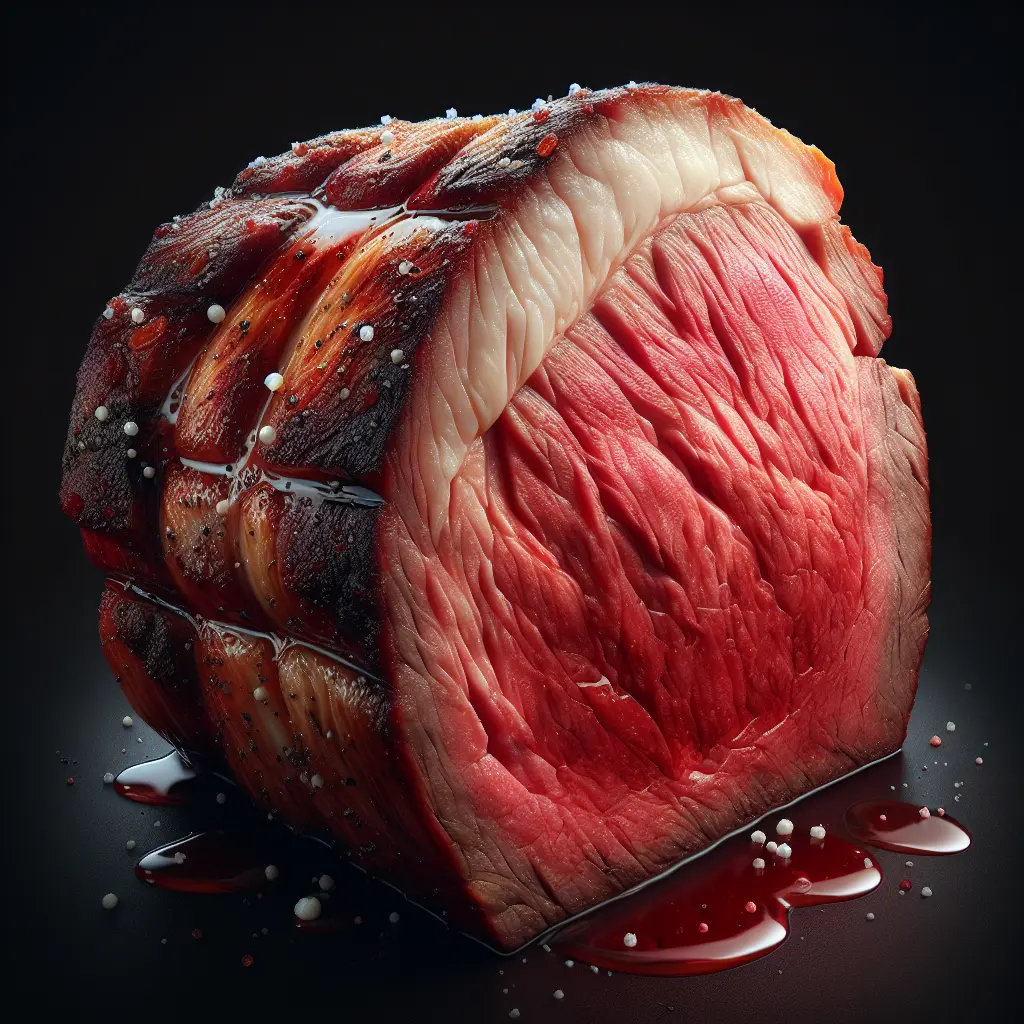Prime Rib: A Cut Above the Rest
Prime rib, also known as standing rib roast, is a prized cut of beef that originates from the upper rib section of the cow. This exceptional cut is renowned for its exceptional tenderness, marbling, and rich, beefy flavor. The secret to its unparalleled quality lies in its strategic location, which allows for optimal fat distribution and flavor development.
Compared to other cuts of beef, prime rib stands out with its superior marbling. This intricate network of fat within the meat ensures that each bite melts in your mouth, delivering an explosion of juicy, flavorful goodness. The aging process further enhances the meat's tenderness and intensifies its umami-rich flavor profile.
Nutritional Profile
While prime rib is not a low-calorie food, it offers a significant amount of protein and essential nutrients. A 3-ounce serving of prime rib provides:
- Calories: 290
- Protein: 19 grams
- Fat: 23 grams
- Carbohydrates: 0 grams
- Fiber: 0 grams
- Sugar: 0 grams
Prime rib is a rich source of iron, zinc, and B vitamins, which play vital roles in various bodily functions, including red blood cell production, immune system support, and metabolism.
Cooking Prime Rib to Perfection
Preparing prime rib is an art form that requires patience, attention to detail, and a touch of culinary expertise. The key to achieving a perfectly cooked prime rib lies in the roasting process. Here are the essential steps:
- Seasoning: Generously season the prime rib with salt, pepper, and your favorite herbs and spices. This step helps enhance the meat's natural flavors.
- Roasting: Place the seasoned prime rib in a roasting pan fitted with a rack. Roast uncovered in a preheated oven at 450°F (230°C) for 15 minutes to create a flavorful crust.
- Reducing Temperature: After 15 minutes, reduce the oven temperature to 325°F (160°C) and continue roasting until the internal temperature reaches your desired doneness. Use a meat thermometer to ensure accuracy.
- Resting: Once cooked, remove the prime rib from the oven and let it rest for at least 30 minutes before carving. This allows the juices to redistribute throughout the meat, resulting in a more tender and flavorful experience.
Serving Suggestions
Prime rib is a versatile dish that can be enjoyed in various ways. It can be served as the main course of a special occasion dinner, accompanied by roasted vegetables, mashed potatoes, or a rich gravy. Alternatively, thinly sliced prime rib can be used in sandwiches, salads, or appetizers.
Conclusion
Prime rib is a culinary masterpiece that deserves a place on every special occasion table. Its exceptional tenderness, juicy texture, and rich flavor will leave a lasting impression on your palate. Whether you're a seasoned chef or an aspiring home cook, mastering the art of cooking prime rib will elevate your culinary skills and impress your guests.
How many calories are in Prime Rib?
Each 3 oz of Prime Rib contains 290 calories.
Prime Rib Nutritional Information
| Nutrient | Amount per 3 oz (85g) |
|---|---|
| Calories | 290 Calories |
| Protein | 19g |
| Fat | 23g |
| Saturated Fat | 9.3g |
| Cholesterol | 0.071mg |
| Carbohydrates | 0g |
| Dietary Fiber | 0g |
| Sugar | g |
| Sodium | 0.054mg |
| Potassium | 0.2754mg |
| Calcium | 0.011mg |
| Iron | 0.0021mg |
